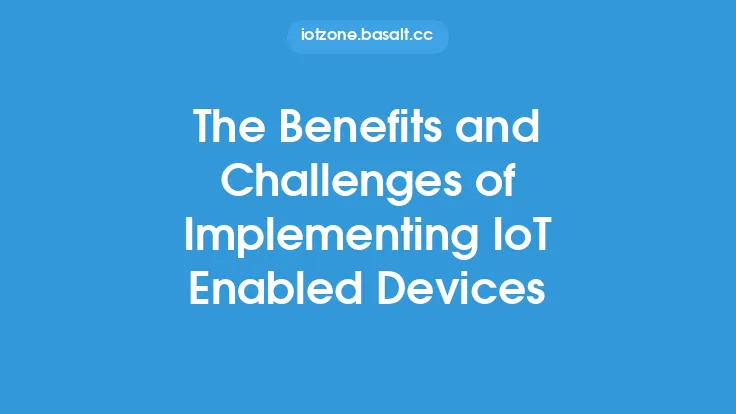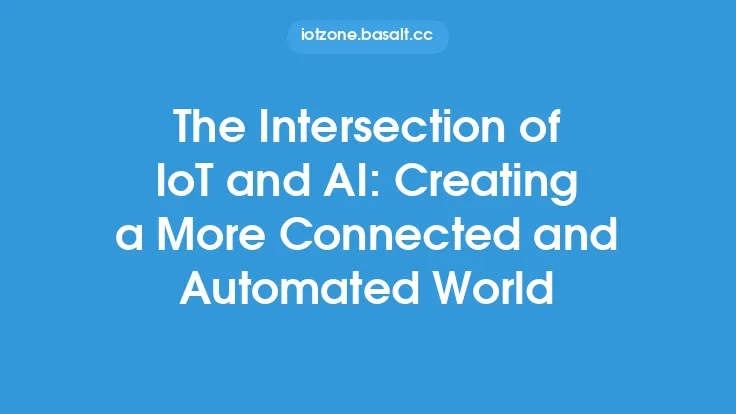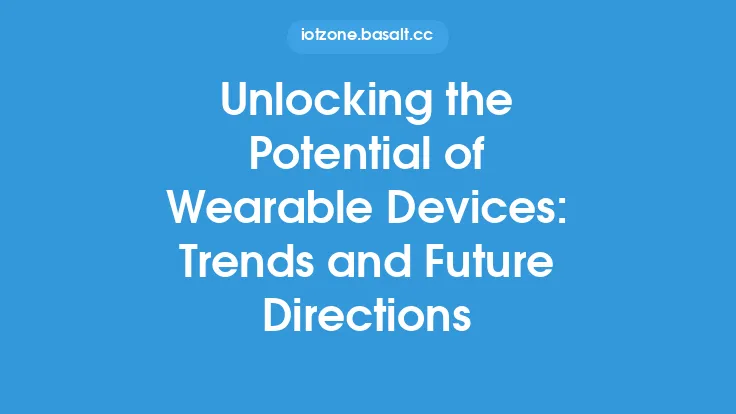The Internet of Things (IoT) has been transforming the way we live and work by enabling devices to collect and exchange data, making our lives more convenient, efficient, and connected. IoT enabled devices have been widely adopted across various industries, and their applications are numerous and diverse. In this article, we will delve into the real-world applications of IoT enabled devices, exploring success stories and case studies that demonstrate their impact and potential.
Introduction to Real-World Applications
IoT enabled devices have been successfully deployed in various sectors, including manufacturing, logistics, agriculture, and more. These devices have enabled businesses to optimize their operations, improve efficiency, and reduce costs. For instance, in manufacturing, IoT enabled devices such as sensors and actuators can be used to monitor and control production lines, predict maintenance needs, and optimize supply chain management. In logistics, IoT enabled devices such as GPS trackers and RFID tags can be used to track shipments, monitor inventory levels, and optimize routes.
Success Stories in Industrial Settings
One notable example of IoT enabled devices in industrial settings is the use of predictive maintenance in manufacturing. By using sensors and machine learning algorithms, manufacturers can predict when equipment is likely to fail, allowing them to schedule maintenance and minimize downtime. For example, the German company Siemens used IoT enabled devices to implement predictive maintenance in its manufacturing plants, resulting in a 50% reduction in downtime and a 20% reduction in maintenance costs. Another example is the use of IoT enabled devices in quality control, where sensors and cameras can be used to monitor production lines and detect defects in real-time.
Case Studies in Smart Cities
IoT enabled devices have also been widely adopted in smart city initiatives, where they are used to improve public services, enhance citizen engagement, and optimize resource allocation. For example, the city of Barcelona has implemented an IoT enabled smart lighting system, which uses sensors and LED lights to optimize energy consumption and reduce costs. The system has resulted in a 30% reduction in energy consumption and a 25% reduction in maintenance costs. Another example is the use of IoT enabled devices in waste management, where sensors and RFID tags can be used to monitor waste levels and optimize collection routes.
Applications in Environmental Monitoring
IoT enabled devices have also been used in environmental monitoring, where they are used to track and monitor environmental parameters such as air quality, water quality, and noise pollution. For example, the city of London has implemented an IoT enabled air quality monitoring system, which uses sensors to track air quality levels and provide real-time data to citizens. The system has resulted in a 20% reduction in air pollution levels and a 15% reduction in respiratory problems. Another example is the use of IoT enabled devices in wildlife conservation, where sensors and cameras can be used to track and monitor wildlife populations.
The Role of IoT in Supply Chain Management
IoT enabled devices have also been widely adopted in supply chain management, where they are used to track and monitor shipments, inventory levels, and logistics operations. For example, the company Maersk has implemented an IoT enabled supply chain management system, which uses sensors and RFID tags to track shipments and monitor inventory levels. The system has resulted in a 20% reduction in transit times and a 15% reduction in inventory costs. Another example is the use of IoT enabled devices in cold chain management, where sensors and RFID tags can be used to monitor temperature levels and ensure that perishable goods are stored and transported at the correct temperature.
Technical Considerations
From a technical perspective, IoT enabled devices rely on a range of technologies, including wireless communication protocols such as Wi-Fi, Bluetooth, and cellular networks. They also rely on data analytics and machine learning algorithms to process and analyze the data generated by these devices. For example, the use of edge computing and fog computing can help to reduce latency and improve real-time processing, while the use of cloud computing can help to scale and manage large amounts of data. Additionally, the use of IoT protocols such as MQTT and CoAP can help to enable efficient and secure communication between devices.
Future Directions
As the IoT continues to evolve and grow, we can expect to see even more innovative applications of IoT enabled devices. For example, the use of 5G networks and edge computing can help to enable even more real-time processing and analysis, while the use of artificial intelligence and machine learning can help to improve predictive maintenance and quality control. Additionally, the use of blockchain and other distributed ledger technologies can help to enable secure and transparent data sharing and collaboration. As the IoT continues to transform industries and improve our lives, it is essential to stay informed about the latest developments and advancements in this field.




